[For the background on this series, please see the Introduction]
So far in this series I’ve talked about many of the tricks the Obama campaign is using to get the most out of Twitter, such as tracking links, using multiple accounts, and integrating Twitter into an overall marketing campaign. While the advanced techniques are the most interesting, it still pays to heed Larry Bird’s dictum “first master the fundamentals”. Let’s see how the Obama campaign has followed that advice and mastered Twitter fundamentals.
I’ve talked a bit about some of the Obama basics before: in the second installment of this series I talked about the diverse subjects the campaign tweets about and how and when they include links. That post covers the content of the tweets thoroughly and is worth a review.
But even more basic than that are issues of when to tweet, how frequently to tweet, and how to use the limited space of a tweet. These issues are driven by the unique nature of Twitter: tweets are fairly ephemeral, scrolling quickly off a feed as they’re pushed down by new ones, and tweets are tightly constrained in length and content.
These limits strongly distinguish Twitter from other social media networks such as Facebook, Tumblr, and LinkedIn. And these limits demand a unique strategy to get the best results from Twitter’s challenging capabilities.
Let’s start with the most basic of questions: what time of day should you tweet? For most of us, the answer is “whenever the heck I have time.” I’ve seen politicians tweet at 2 am, when activity on Twitter is very low. Of course, if you’ve got a message for the 2am crowd, go for it! But, generally, the best times to reach people are during the working hours.
Let’s look at the timing of @BarackObama’s tweets:
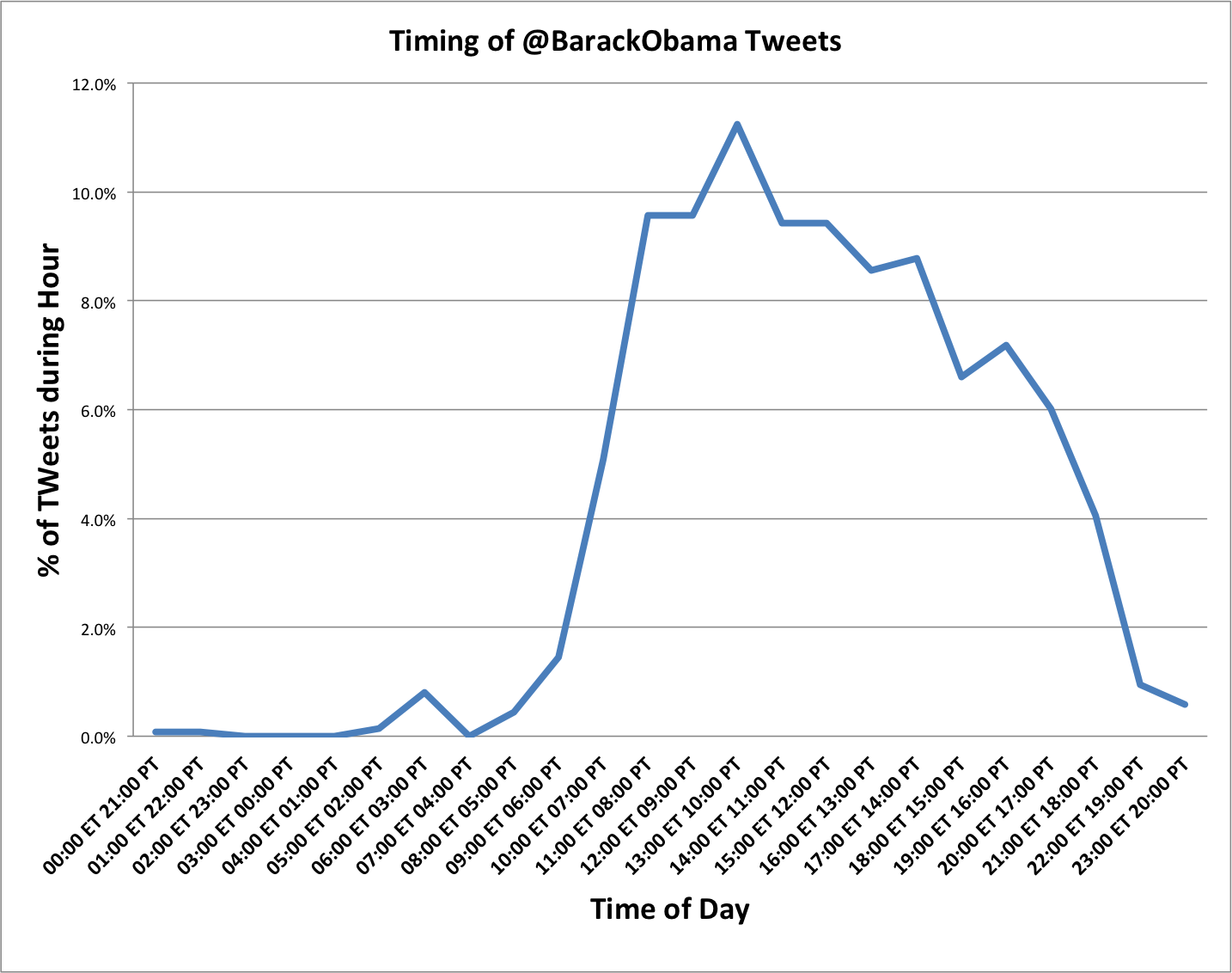
Unlike most politicians, Obama needs to reach people across 6 time zones (with 4 time zones having the bulk of the population), so he spreads his tweets out during the day. He starts into his busy time around 10am eastern, hits a peak at 10am pacific (1pm eastern), and then sustains the tweeting until around 6pm pacific. His “average” time of tweeting is 3:25pm ET.
As a contrast (and as a example of what not to do), let’s look at when @MittRomney tweets:
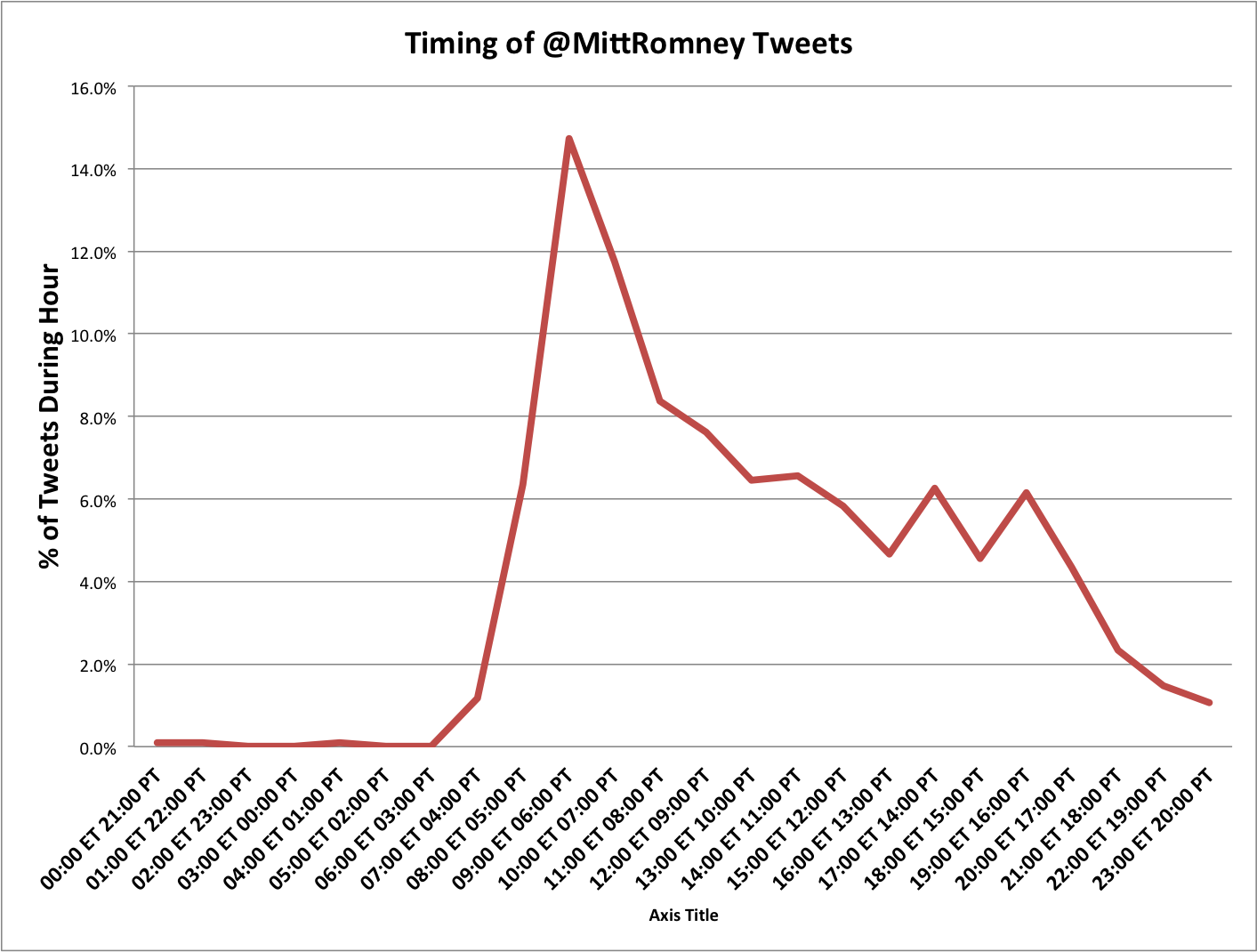
Mitt front loads his day pretty heavily. On average, he’s sent out half of his tweets before 9am PT. Part of that may be as a result of his travel schedule while he’s wound down the recent primaries and some of it may be a focus certain swing states; but as a result he’s not reaching as broad of an audience as Obama. If Mitt were running for senate in Massachusetts again, his timing would still skew to the early, but not so objectionably so.
Just because, however, you are at the keyboard composing your tweets at 8 am like @MittRomney doesn’t mean that’s when they have to go live. You can use applications like TweetDeck or Hootsuite to compose your tweets ahead of time and schedule exactly when to send them.
Just as there’s a pattern to the time of day that @BarackObama tweets, there’s a pattern to the days of week he favors:
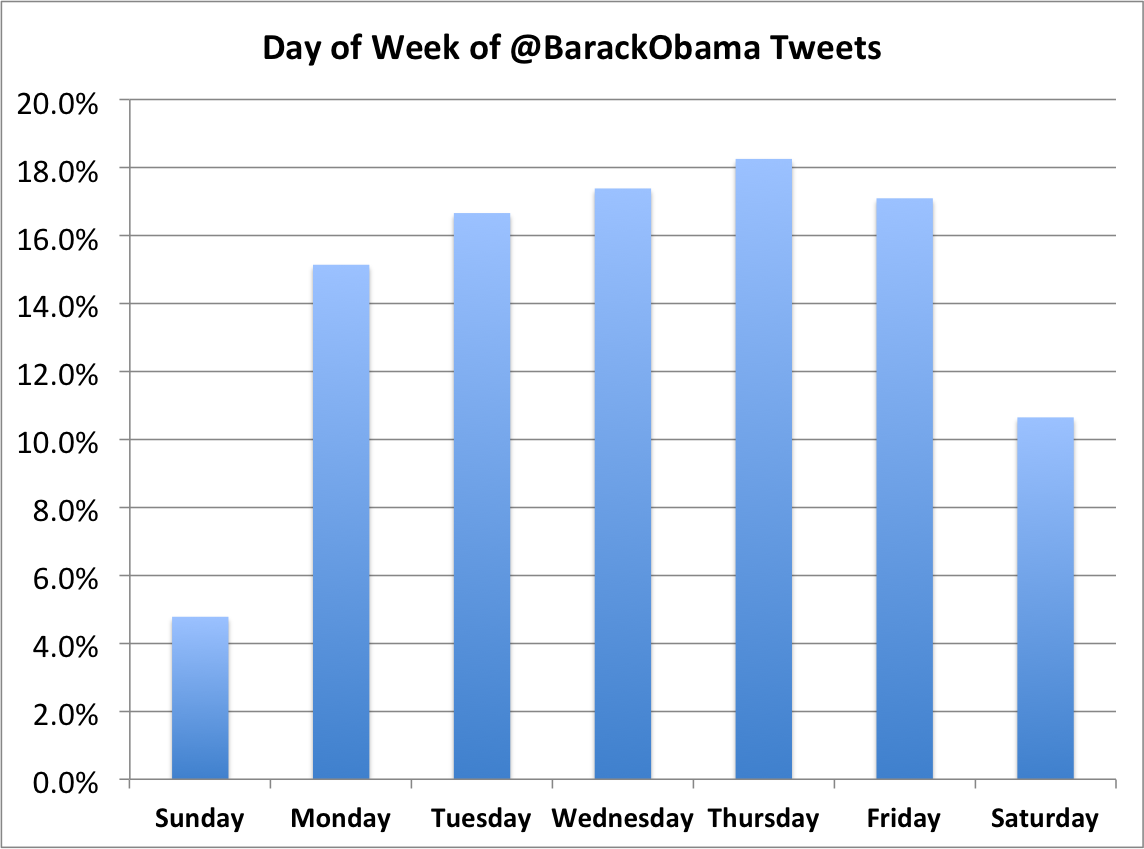
Click on image to enlarge
For the most part, it seems, @BarackObama is a working hours, work week kind of tweeter. These patterns match up with studies others have done in terms of the best times of day to tweet, not surprisingly. It’s important to recognize that, unless there is a very strong reason not to1, in general you should focus on the M-F working hours for the region you’re trying to reach. Again, the right tools allow you to compose your tweets in advance to deliver them with precision timing.
Now we know when Obama typically tweets, but what about the mechanics of how @BarackObama writes each tweet? There are a few simple metrics we can look at. First of these is the length of the tweets:
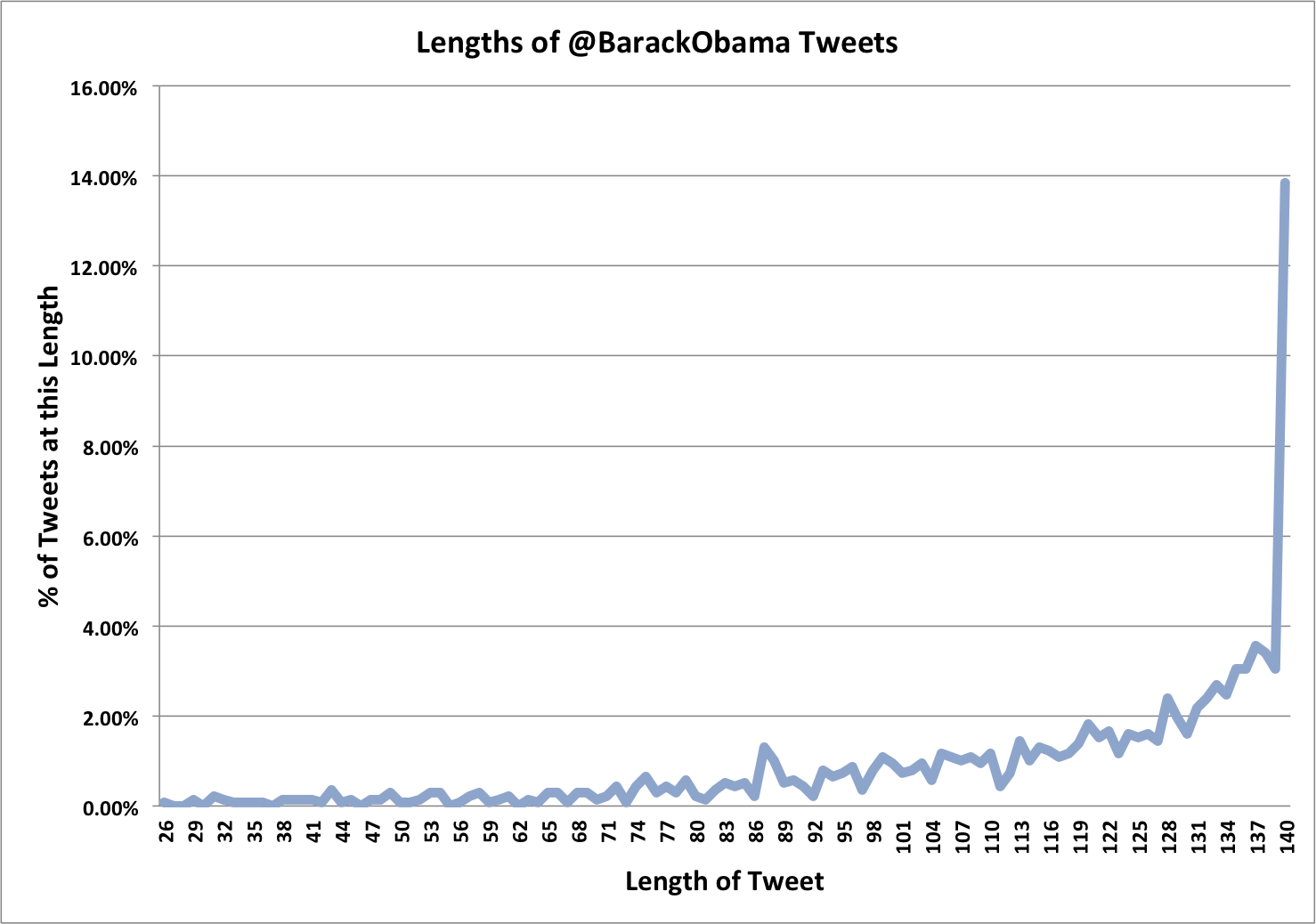
Click on Image to Enlarge
The Obama campaign goes out of their way to use every single one of the 140 characters in a tweet. Most of us compose tweets by typing in the message, finding it goes over, and then making incremental edits until it fits into 140 characters. That generally gives us tweets randomly between 131 and 140 characters; to so frequently hit 140 is not just random. In silly Twitter-speak, using the full 140 characters in a tweet is called a “twoosh”. Which is how Obama came to be quoted on this topic in the Politico article, Obama: ‘I’m the twoosh master’.
Paradoxically, the shorter your tweets the more likely they are to get retweeted. I assume that the Obama campaign has either (a) determined that, in their case, having longer tweets gets more engagement, or, (b) decided they want to get as much into every tweet to maximize the value of an “impression”. If you are also in politics, I would tend to follow the Obama model and aim towards twooshes2 (but not be OCD about hitting 140 characters). Otherwise I would look carefully at whether shorter tweets do you good.
One thing that chews up space in a tweet is including a URL. I discussed, in a previous post, Obama’s frequency of URLs in posts, so I will simply reprise the chart here for reference:
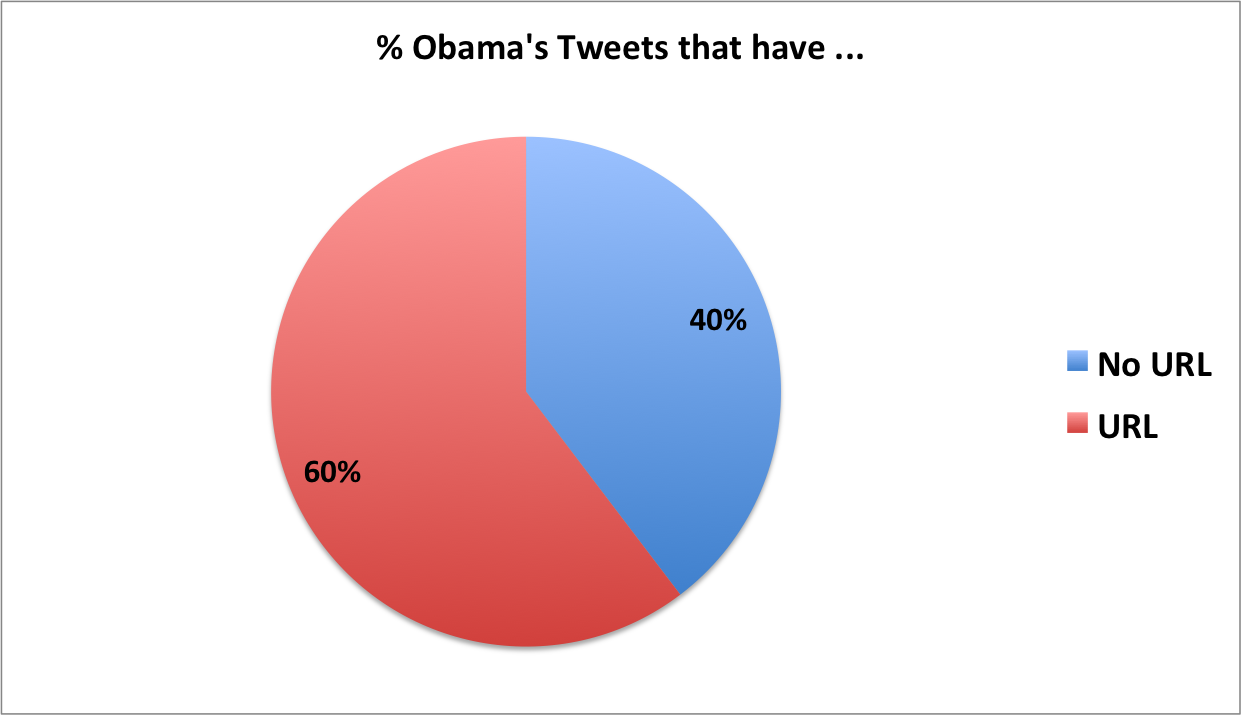
Hashtags are another thing that eats up space in tweets. How many does the President’s campaign use typically when tweeting?
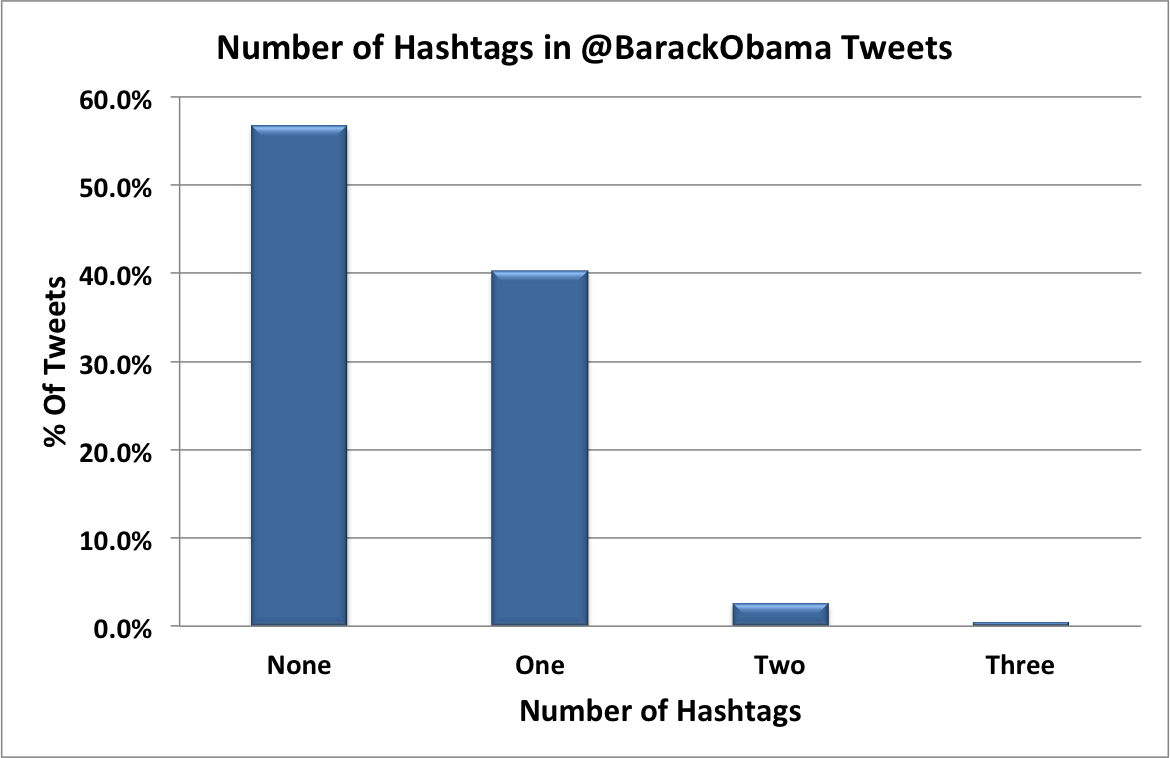
Click on image to enlarge
Interesting that most tweets do not have hashtags; when they do, they tend to have just one. I think there are some strong reasons for their pattern:
- The advantage of being the President with 16 million followers is that people are looking for your tweets in particular. No hashtag is going to cause more people to read the tweets.
- The campaign is not often reacting to a trending topic: they are creating new topics. There’s no established hashtag for them to use.
- It avoids a silly hashtag hijack game
- When they do use hashtags, it is often ones they have defined themselves to kick off discussion on a political point; examples include the tags #forward and #dontdoublemyrate.
Unfortunately, while this information is useful to anyone running for President, it’s not as useful for the rest of us with a lot less than 16 million followers. For us less popular folks, hashtags need to be picked out carefully. If we’re composing a tweet that is going to be part of an established conversation, it is natural to use the one that defines the conversation. Normally, though, you need to find the right hashtag or two that will bring your tweet to the attention of the largest audience possible.
How do you know which hashtags to use? Research. I have a free hashtag research tool any and all are welcome to use called
Tag-o-matic. You give it some key words for your topic, and it will give you the most popular hashtags associated with that topic. It’s worth a try, I promise.
Finally, how frequently should you tweet? In the case of Obama, he tweets roughly 12 times a day on average. That’s a bit more than once an hour during his “prime time”. Romney tweets about 1 1/3 times a day. Here’s a week by week breakdown — the difference is visually striking:
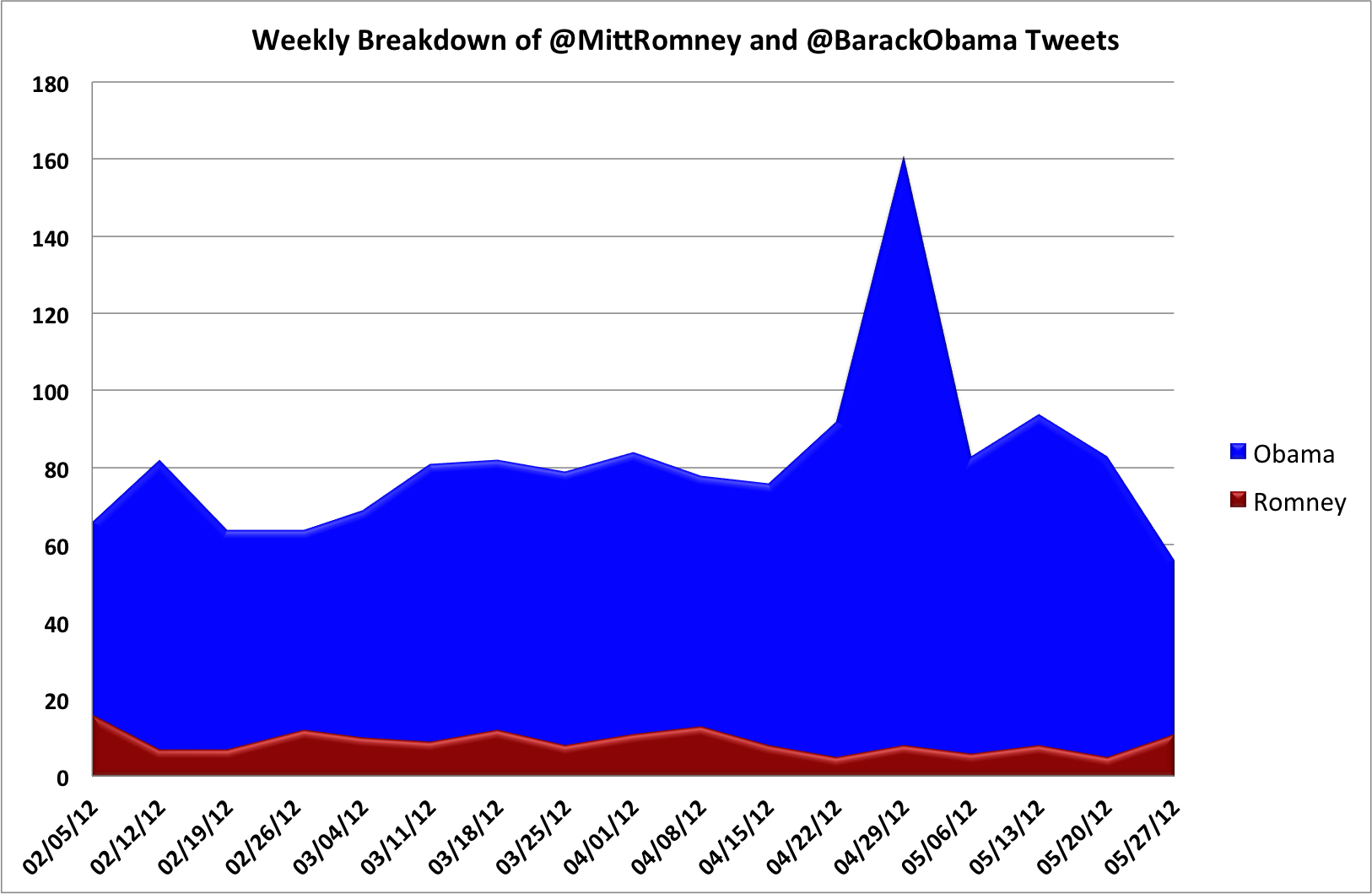
Click on Chart to Enlarge
I’ve
commented before on the difference between @BarackObama and @MittRomney in terms of how much they tweet, so I won’t add comments here; not a lot are needed!
It would be safe to say, though, that there is no reason the Romney campaign could not increase the volume of tweets to match Obama. For the rest of us, who are not running for President, it may be too much to hit Obama’s 12 tweets a day without becoming slightly spammy. But anyone can do a lot better than @MittRomney’s 1.3 a day!
If you get the fundamentals right, your tweets will reach the largest audience possible. After that, it’s a matter of connecting with them on your message and making the best use possible of their engagement.
Keep up to date with future updates to this series by following me on Twitter and/or subscribing to updates to this website. To see all posts in this series, visit the overview page.
Footnotes:
1: For example, if you are tweeting for the hashtag #uppers, you want to be tweeting from 8am to 10am Saturday and Sunday, when Up with Chris Hayes is on the air.
2: I’m not sure if Twooshes is the proper plural for Twoosh, but I’m going with it.







